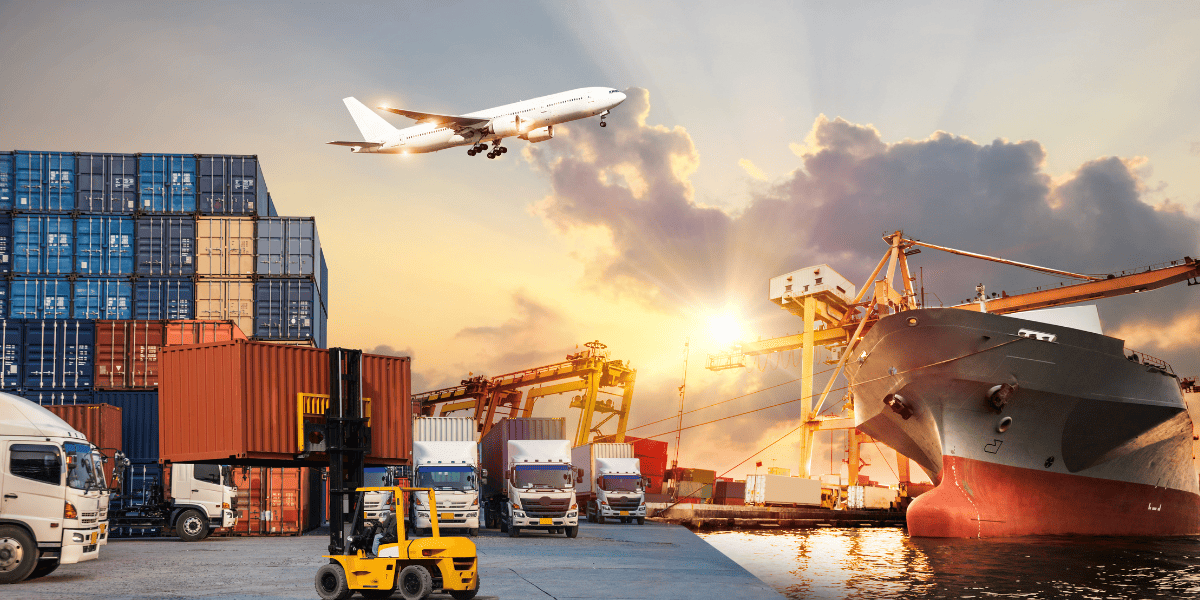Air Freight vs Sea Freight: How to Choose for Import & Export

In today’s global trade era, air freight and sea freight are the two most common international shipping methods. Many businesses often face the same question when arranging import-export logistics: “Should I choose air freight or sea freight?” The decision goes beyond cost—it involves delivery speed, cargo type, shipping risks, and long-term strategy. This article compares their advantages, disadvantages, cost differences, and transit times, offering professional advice to help companies select the most suitable logistics solution.
What’s the difference between Air Freight and Sea Freight?
In international logistics, choosing air or sea freight depends on factors such as speed, cost, and cargo characteristics—all of which impact the final decision.Transit Time
Air freight is known for speed—shipping from Taiwan to the U.S. takes only 2–5 days. Sea freight, depending on the route and port congestion, usually takes 15–45 days.Conclusion: For new product launches or urgent shipments like electronics, air freight prevents delays. For stable bulk exports, sea freight reduces long-term costs.
Air Freight vs Sea Freight Transit Time Comparison
| Route | Air Freight ✈️ | Sea Freight 🚢 |
|---|---|---|
| Taiwan ↔ China (Shanghai, Guangzhou, Shenzhen) | Approx. 1–3 days | Approx. 3–7 days |
| Taiwan ↔ Japan | Approx. 1–2 days | Approx. 4–7 days |
| Taiwan ↔ Korea | Approx. 1–2 days | Approx. 3–5 days |
| Taiwan ↔ U.S. West Coast | Approx. 2–5 days | Approx. 15–20 days |
| Taiwan ↔ U.S. East Coast | Approx. 3–7 days | Approx. 30–45 days |
| Taiwan ↔ Europe | Approx. 3–7 days | Approx. 25–35 days |
| Taiwan ↔ Southeast Asia | Approx. 1–3 days | Approx. 5–10 days |
*Transit times are for reference only and may vary based on actual conditions.
Shipping Cost
Air freight is more expensive, usually charged by “actual weight or dimensional weight (whichever is higher).” Sea freight is much cheaper, priced by “LCL (Less than Container Load)” or “FCL (Full Container Load),” with lower unit costs.Conclusion: Small urgent shipments → Air freight is cost-effective; Bulk cargo → Sea freight is most economical.
Air Freight vs Sea Freight Cost Comparison
| Mode | Cost Example | Best For |
|---|---|---|
| Air Freight ✈️ | Taiwan → U.S. West Coast NT$150–250 / kg 100 kg ≈ NT$15,000–25,000 |
Electronics, precision instruments, medical supplies, high-value urgent shipments |
| Sea Freight 🚢 | Taiwan → U.S. West Coast 20ft Container ≈ NT$30,000–60,000 Capacity: 20–25 tons |
Bulk cargo, furniture, construction materials, auto parts |
Cargo Type
Air freight suits high-value, urgent, or perishable goods like electronics, precision tools, and pharmaceuticals. Sea freight is ideal for heavy, bulk, or durable goods such as construction materials, furniture, and machinery.How Should Businesses Choose?
For small, high-value shipments—choose air freight (electronics, medical devices, luxury goods). For bulk or heavy goods—choose sea freight (construction, furniture, auto parts) to cut costs. Many companies adopt a dual strategy: urgent shipments by air, regular shipments by sea, balancing speed and cost.Air Freight vs Sea Freight Pros & Cons
| Aspect | Air Freight ✈️ | Sea Freight 🚢 |
|---|---|---|
| Key Advantages |
|
|
| Key Disadvantages |
|
|
FAQ
Q1: How much more expensive is air freight compared to sea freight?
Air freight is typically 5–10 times more costly, depending on weight and volume.Q2: How long does sea freight take?
Transit times vary: China 3–7 days, Japan 4–7 days, Korea 3–5 days, Southeast Asia 5–10 days, U.S. West Coast 15–20 days, Europe 25–35 days.Q3: Should beginners choose air freight or sea freight?
For urgent or high-value goods → Air freight; For large shipments → Sea freight.Q4: How can logistics companies help reduce costs?
Freight forwarders coordinate across carriers, but working directly with a logistics company ensures faster quotes, scheduling, and better supply chain flexibility. This avoids hidden fees and reduces overall import-export costs.Conclusion
In international shipping, air freight is fast and secure—perfect for high-value urgent shipments; sea freight is cost-effective and ideal for bulk goods. Businesses should choose based on cargo type and time sensitivity—or use a mixed strategy. Finding a reliable logistics partner is key to meeting deadlines and staying competitive. Since 1995, Shil International Logistics has specialized in air, sea, and land freight, along with customs clearance, warehousing, and distribution. With our professional dispatch team, owned fleet, GPS tracking, and full insurance coverage, we ensure every shipment arrives on time, safe, and worry-free.No matter if you are exporting to the U.S., Europe, or importing into Taiwan, we tailor the best air or sea freight solutions to help businesses cut costs and improve efficiency. Need professional support? Contact us here.

